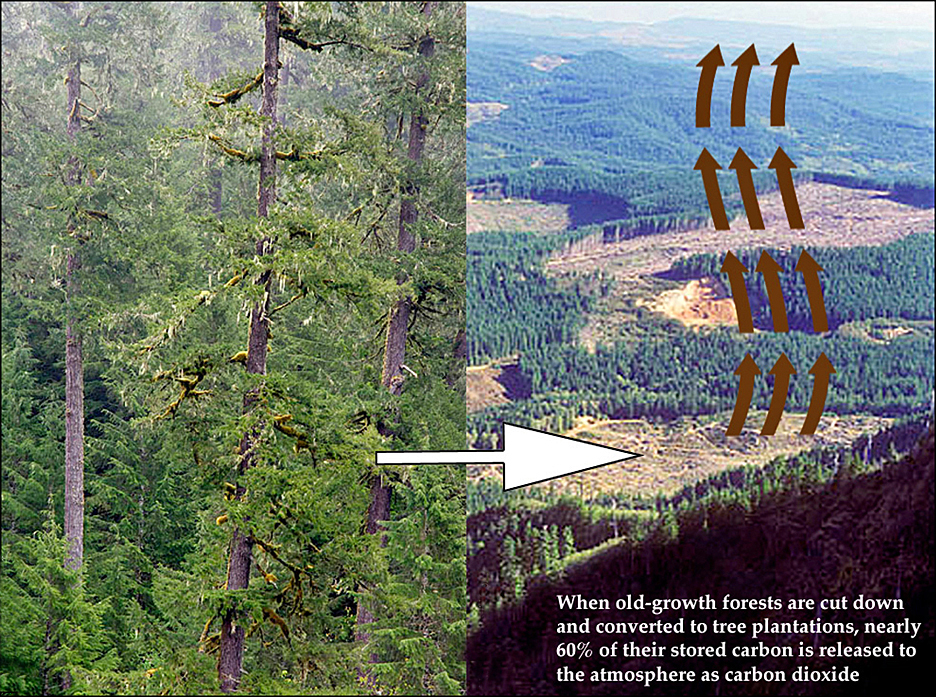| HOME | PROTECTION | NATURE | PLAN YOUR VISIT | FAQ | JOIN/DONATE | ABOUT |
| Climate Change and Forests |
 |
On the scale of the whole planet, deforestation contributes more to global warming than the entire transportation industry. In the Pacific Northwest, when old-growth forests are cut down and converted to tree plantations, nearly 60% of their stored carbon is released to the atmosphere as carbon dioxide when it is converted to young growth, via decomposition of logging slash, fossil-fuel Forests contribute to the atmosphere in two ways: they actively remove carbon through photosynthesis as they simultaneously release oxygen, and they store enormous amounts of carbon in their biomass. After the enactment of the Northwest Forest Plan, and with the subsequent reduction of logging on federal lands, northwestern forests changed from a source of atmospheric carbon pollution to a carbon sink that removes carbon from the atmosphere and safely stores it in old forests. A recent memo to the Bureau of Land Management suggests that the climate-related costs of logging western Oregon forests are 25-95 times higher than the federal government receives for the timber. |
Sources for the information on this page: "Effects on Carbon Storage of Conversion of Old-Growth Forests to Young Forests", by Mark E. Harmon, William K. Ferrill and Jerry F. Franklin, Science, Feb 9, 1990 "A synthesis of current knowledge on forests and carbon storage in the United States" WHY FORESTS NEED TO BE ENLISTED IN CLIMATE CHANGE ACTIONS Memo from Ernie Niemi to Mark Brown, Project Manager, Resource Management Plans for Western Oregon, BLM, dated Mar. 28, 2016, based on Cai, Yongyang, Timothy M. Lenton, and Thomas S. Lontzek. 2016, "Risk of multiple interacting tipping points should encourage rapid CO2 emission reduction." Nature Climate Change. http://www.nature.com/nclimate/journal/vaop/ncurrent/full/nclimate2964.html |
| Return to Protection page | Return to Old-Growth Forests page |